Search our Archives:
» Home
» History
» Holidays
» Humor
» Places
» Thought
» Opinion & Society
» Writings
» Customs
» Misc.
|
“August with Chaim”
By Heidi M. Szpek, Ph.D.
I confess, August slid almost imperceptibly into September and the affair was still going strong. But, as everything has a beginning and an end, this affair, too, had to end. But with what impact on my life! Yet I get ahead of myself and must confess again, I knew of Chaim years ago. So briefly was our acquaintance then that I do not believe I truly appreciated what he had to teach me about life, about love, about sorrow and pain. Perhaps the twenty-some odd years that have intervened in our relationship have allowed me to philosophize in a way not possible before about his wisdom and his passion. The experiences of my life and my education have now provided me with the ability to see far beyond the surface of his words, to be led into his world which has become mine – if only temporarily. But again I get ahead of myself. Let me tell you of my Augusts … and Septembers … with Chaim’s world.
Chaim’s world had “the power ‘to create worlds out of words on paper’.”* These worlds were those of the Orthodox and Hasidim in New York at the onset and aftermath of World War II through a journey into the lives of Danny Saunders, Reuven Malter, Asher Lev, and Ilana Davita Dinn. The intersection of their worlds in Chaim’s words yielded the vibrancy and pain of this tumultuous period for the world, for Jews in America, but for Eastern European Jewry, in particular.
Years ago, Chaim’s first book The Chosen was required undergraduate reading for my studies in Judaica. The ‘unlikely friendship’ between Reuven Malter, a secular Jew, and Danny Saunders, heir to a Hasidic rebbe in Brooklyn of the 1940s, brought our class tête-à-tête with diversity within Judaism, the richness of Jewish tradition, its passion for Talmudic study in this particular story, and the mystical side of Hasidism – all set against the first rumblings of the Holocaust in Europe. The lives of Reuven and Danny reveled in their passion for and toil in learning, the love and demands of family, and a friendship that should not be in place, but was required to nurture the souls of each young man like nothing else could.
Years later, I met Asher Lev – in August of 2005. In Chaim’s book My Name is Asher Lev, the Hasidic world beckoned one path for Asher; but the Ribbono Shel Olam, the Master of the Universe, had ordained another world, a world in which artistic creations were born from within him and fought to emerge. Pencil to paper, charcoal to paper, oil to canvas, whatever medium did not matter, for in truth iconic expression should not be for Asher – it was forbidden by the Second Commandment. Yet what if the Ribbono Shel Olam imbued within him this gift – the gift of Asher Lev, a gift that would both endear and distance him from his family? Could this gift not also be from the Sitra Athra ‘the Other Side’ – the origin of all that was contrary and evil in Hasidic ideology? Herein was the struggle to let the pictures within Asher be released to the world; images that reflected the world of the Hasidim and that liminal world within which Asher was also trapped. To give up this gift would be to give up his soul.
September brought Davita into my life in Chaim’s Davita’s Harp. Davita Chandal’s youth, spent in the 1930s and 1940s in New York, was immersed in the Zionist struggles of her parents. The death of her father brought Davita back to the Jewish faith of her mother and new step-father. Davita would become Ilana Davita Dinn, though still tied to her father, Michael Chandal, through his photograph, an oil painting from a family holiday, and a “guitar-shaped door harp [-] made from a piece of butternut wood ... four maple-wood balls [---] attached to four varying lengths of fish line.” After her mother’s remarriage the harp hung from her bedroom door, before that “the harp had hung over the front door of every place [they] had lived” – and there had been many places. The balls went “ting tang tong tung ting tang” throughout the comings and goings of Davita’s world. And in one particular story, “The Ark Builder”, ‘ting tang tong tung ting tang’ would resound as the door to Davita’s room and world would indirectly connect with mine.
In Chaim’s short story “The Ark Builder,” Davita became the English language tutor for Noah Stremin, the only survivor of his family from the shtetl of Kralov, Poland. Because Noah could draw and was thus deemed useful, he survived Auschwitz, eventually immigrating to America to live with his aunt and uncle. Noah needed to learn English, and fate brought Davita to his assistance where she would learn of the tragedy of his eternal loss, a loss so painful that only slowly could he tell of his past.
Like Asher Lev, Noah Stremin had a gift, a gift of drawing and of painting. This gift ‘appeared’ one day after glancing through a book of drawings from his father’s bookshop. Noah copied some of the drawings, twelve drawings, which his father took to Reb Binyomin, the caretaker of their synagogue, a wooden synagogue. Wooden architecture was traditional for construction throughout Poland pre-World War II; synagogues were no exception. While the exteriors offered simple features, inside the bimah and ark were elaborately carved. The walls were a virtual canvas for animals, with intricate floral designs and Hebrew inscriptions. Such was the interior – or once was the interior, of the wooden synagogue of Kralov, Poland. This was Noah’s synagogue and his twin brother Yoel’s synagogue, his family’s synagogue, the community of Kralov’s synagogue, and perhaps above all it was the synagogue, the third synagogue, for which Reb Benyomin had been caretaker. But Reb Binyomin was more than caretaker – he did not simply sweep the floor or prepare the stove, he brought forth the Torah scroll from the Ark to the bimah. Sometimes Reb Binyomin was even called up to the bimah to read.
Reb Binyomin was also there to meticulously care for the aesthetics of the synagogue, for every interior design, for the wall paintings, for the delicately carved lions, deer, leopards, eagle, flower ornaments on the bimah itself. But lack of funds had caused this synagogue to fall into disarray. To renovate the interior of the synagogue at Kralov would be the third such honor for Reb Binyomin. Such an honor was incomprehensible for Reb Binyomin, especially because in Kralov’s synagogue was “one of the oldest arks in eastern Europe, worn from revolution and pogroms.” “A wooden synagogue,” Reb Benyomin said, “is an expression of the carpentry used by the local population in the habit of constructing many of its buildings in timber. But the ark of that synagogue that is something very special. It is its soul.” Yet the First World War intervened. Years passed by. Reb Binyomin grew older, and the town poorer. Reb Binyomin lost hope. Until one day when Noah’s drawings came by chance, or by the intervention of the Ribbono Shel Olam, to Reb Binyomin. The Reb said Noah had the gift of Bezalel.
In the biblical book of Exodus 31, we meet Bezalel as the first Israelite to build an ark while the Israelites wandered in the wilderness. Rabbinic tradition relates, too, that God was ‘determined’ to appoint Bezalel to this position, yet God asked for Moses’ approval. Moses replied, “Lord, if he is acceptable to Thee, surely he must be so to me!" Yet God also commanded that the people agree – and they did. Tradition also goes on to record that Moses ordered Bezalel to build the Tabernacle before the Ark, yet Bezalel ‘suggested’ that “men usually build the house first and afterward provide the furnishings; but that, inasmuch as Moses had ordered the Tabernacle to be built last, there was probably some mistake and God's command must have run differently. Moses was so pleased with this acuteness that he complimented Bezalel by saying that, true to his name, he must have dwelt ‘in the very shadow of God’.”*
The name Bezalel ends with the theophoric element /-el/ “God” so frequent in Hebrew names. The initial /be/ is the preposition “in” and /tsel/ means “shadow” – “in the shadow of God” – Bezalel. The meaning of his name would ring even more resplendent as the Talmud records that Bezalel accomplished these artistic feats at age 13. To be likened to Bezalel or given that name must indeed be an honor or a portent for artistic acumen. Noah Stremin was likened to Bezalel; his twin brother Yoel, though not quite a Bezalel, had “eyes alive with ideas”. Both brothers possessed acumen and insight beyond their mere ten years of age or perhaps still retained the innocence to take on such a monumental endeavor as to bring back “a twinkle of hope in the lost eyes of Reb Binyomin.” Noah and Yoel were soon joined in renovation by local yeshivah students, Zionists, Revisionists and Bundists – and even some Hasidim. Yet it was not just the interior paintings and details that were renovated and refurbished. Reb Binyomin, “a transformed man”, took to his woodshop for the carving of a new ark.
Three days before Rosh Hashanah, Reb Binyomin, Noah and Yoel, along with two porters set the ark in place. Three days before Rosh Hashanah there were also “three days of strange thudding reverberating noises from west of the town,” yet:
We gathered in the synagogue. The ark poured its beauty upon us. We prayed. We prayed in a new dimension of color, space, and time. The holiness of the place; the sense of the first notes from the shofar; the first harsh call … On the second day of Rosh Hashana, in the middle of the morning service, the German army arrived.
Chaim’s story continues. The reader should visit it; yet the ending is no mystery. Noah was the only one to survive; Reb Binyomin died within the synagogue as the Germans burnt it.
Chaim’s story set in Kralov, a shtetl near Krakow, may be a shtetl of his creation, yet Kralov could be any of the thousands of shtetlekh destroyed during the Holocaust. The Kralov wooden synagogue could be any of the wooden synagogues once so prominent in Poland; the Kralov ark could be the ark within any of the more than 450 wooden synagogues in pre-World War II Poland; Reb Binyomin could be any of the thousands of Rebbes who tenderly cared for these synagogues; Noah’s family could be any of the millions murdered during the Holocaust – and Noah, Chaim’s Bezalel, could be any of the survivors who suffer with the agony of loss and the agony of survival.
As I reread “The Ark Builder” that summer of 2005, the name Bezalel, given to Noah by Reb Binyomin, struck a coincidental cord. I had just come across that name on a Jewish tombstone I had translated from Eastern Europe. ‘My’ Bezalel was from Szydlowiec, Poland. His name was set within an upper tombstone register, resplendent with the most intricately carved symbols. Symbols on Jewish tombstones were a common practice signifying a person’s profession, character or lineage. This Bezalel’s symbol was an elaborately opened ark, housing books on two shelves (Image 2). The books on the bottom shelf offered a nicely balanced arrangement: two vertical books at left, two books inclined toward the right, two vertical books at right. The ark doors equaled the height of the two shelves; each door was double-paneled, again matching each shelf. On each side, the ark was flanked by the grand lion of Judah, the protector of Torah. The lions had also flanked the Ark of the Covenant in Solomon’s temple. Atop the ark sat a grand eagle, wings fully extended filling the uppermost curvature of the tombstone.
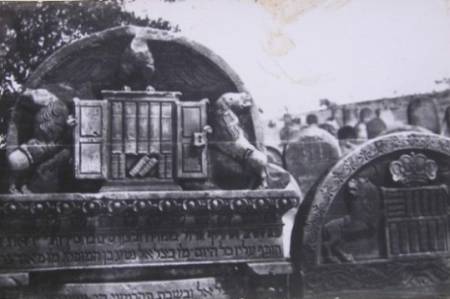
Image 2 Bezalel Upper Register, Szydlowiec, Poland, 1946
Just beneath the ridge, in an upper register inscription, were visible the words "our teacher Bezalel Nota' son of our prominent teacher Reb Meir, may his light shine.” Would that a photograph of Bezalel’s complete tombstone existed, for the bottom register would not only have preserved his date of death, but such adjectives as ‘perfect and upright, God-fearing’ like Job. Such elaborate tombstones often preserved an acrostic poem. Somewhere within the town records of Szydlowiec (if they still exist) might be further details about Bezalel, yet all I know is what is preserved from this upper register. He was affluent, prominent, in some way connected to the Ark – be it as an artist (like Noah and Reb Binyomin), as a scholar (hence the books within the ark), or as a son of a scholar. The photograph of ‘my’ Bezalel – lacking the inscription, does not include the date of death, but another tombstone nearby of Jakob Jehuda indicates that HE died in 5691 according to the Hebrew calendar, 1931 by the contemporary calendar. 1931 – before World War II and before the Holocaust. ‘My’ Bezalel might have passed away during this time, too.
‘My’ Bezalel’s tombstone I’m told still exists today at the old Jewish cemetery in Szydlowiec – “one of the most beautiful in Poland,” preserved and cared for by the Polish government. But that is all that remains of Jewish Szydlowiec. On 4 September 1939, it was bombed by the Germans; by September 9th the German army had occupied the town:
On 9 September, the German army entered Szydlowiec and as soon as the soldiers arrived, they began persecution and cruel treatment of the Jews. Men were seized for forced labor to clear the war damage. Jewish passersby were beaten or their beards or side locks (peyot) were ripped off. At the end of September [Saturday, the 23rd], the Germans broke into the synagogue during Yom Kippur prayers and dragged the rabbi, R. Hayim Yisrael Shalom Yekutiel, and some 1,000 worshippers outside and set the synagogue on fire.*
By 1942 the last Jews of Szydlowiec were transported to Treblinka. Bezalel son of Nota’s synagogue, town and community were gone like Noah Stremin’s Kralov. Bezalel, however, would have passed away before this – not that he wouldn’t have witnessed the pains of anti-Semitism in his own lifetime. But not this final indissoluble wound.
***
It is almost August a year later. I must once again confess, my love affair with Chaim has been rekindled through rereading his writings. As I sit at my desk this late July morning, my first cup of English breakfast tea stands beside my computer. Danny, Reuven, Asher Lev, and Danita are at my desk, spread out like a deck of cards in the works of Chaim Potok – The Chosen, The Promise, My Name is Asher Lev, The Gift of Asher Lev, and Davita’s Harp. Old Men at Midnight sits foremost amongst them at the moment; “The Ark Builder” within this anthology is the wild card. Noah (Bezalel), Yoel and Reb Binyomin are foremost in my mind. Beside these volumes are rough printings of photos of the wooden synagogues of Zabludow and the bimah of Gwordziec – the original photos come from a friend in Poland who has gathered nearly 2000 images of the lost world of wooden synagogues. My computer screen saver set on the Charles Bridge in Prague gives way to the image of a tombstone from Szydlowiec, Poland – that of my Bezalel. Someday I will travel to Szydlowiec.
* * *
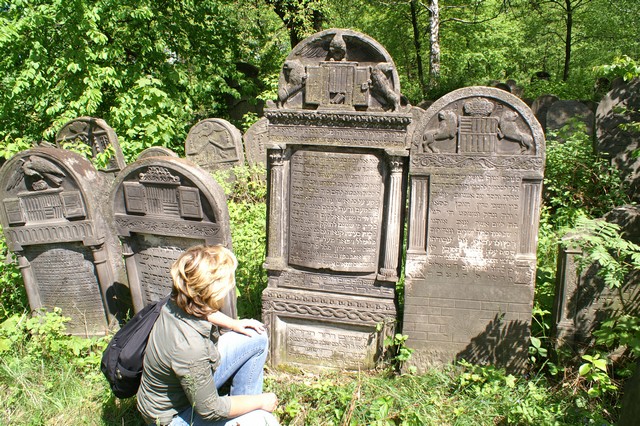
Image 3 Szydlowiec Cemetery, Poland, 2007
I have found ‘my’ Bezalel! Or rather the tombstone of Bezalel Nota’ of Szydlowiec, Poland (Image 3). On return to northeastern Poland in August 2007 we made our way from Krakow to Bialystok via a side trip to Szydlowiec. Though jet lagged the anticipation of finally seeing the complete tombstone and reading the entire inscription of my Bezalel kept me energized. Since Szydlowiec is designated as a Heritage Site Abroad, I assumed locating the cemetery and Bezalel’s tombstone so resplendently executed would be of no difficulty. I was ‘somewhat’ wrong.
Szydlowiec is not a large town; today its population is about 12,000. Our guidebook offered general directions, which resulted in our driving repeatedly from one side of town to another. Given it was early Sunday afternoon, most Poles had come and gone from church services and were now spending time with family at home or in the town square. As we turned onto another residential street, a thirty-some year old mother with her daughter had just pulled up into their driveway. Her daughter was still enjoying a Sunday afternoon ice cream cone. My husband stopped our car beside hers, rolled down the window, and extended a greeting of “Djein Dobry”. I coached him to ask, “Prosze, gdzie jest cmentasz zydowski?” (Please, where is the Jewish cemetery?). She responded in English, offering somewhat confusing directions. And then the unexpected kindness of so many Poles was extended once again. She and her daughter hopped back into their car and indicated that we should follow them. The cemetery was not far. After curves, turns and the like, we pulled up to the cemetery; its walls were obscured by the overgrown shrubs and trees overflowing from within.
With both cars at curbside, we exited to discover the wrought-iron gate held a padlock! I showed her the picture of my Bezalel’s tombstone that I had been seeking. “Nie problema!’ she responded. The woman, the former major of this town as we learned, quickly pulled out her cell phone to inquire about the keys. But we didn’t need keys. Once again, we got into our car and followed her, turning the corner and driving parallel to the cemetery until she (what seemed to be) randomly pulled over to the curb. We exited our cars once again to discover a breach in the cemetery wall … and entered from the back of the Jewish cemetery at Szydlowiec. As we moved inward the cemetery was laid out in two major sections, at right and at left, with an ‘alley’ between. From our position we looked upon the backs of tombstones … but not just a few tombstones, over three thousand tall, rectangular tombstones. Each side section was further divided into smaller quadrants. Those tombstones with candelabra were clearly those of women. Many others held an ark of the covenant with books, or an ark flanked by lions of Judah, like Bezalel’s.
We – the ‘mayor’, my husband, myself and the ‘mayor’s’ daughter, still enjoying her vanilla ice cream cone, began walking quickly but systematically from front to back, section by section, in search of Bezalel. And then the ‘mayor’ asked to look at my photo one more time. “I know [this one]!” Apparently, she had been involved in the cemetery’s preservation in some way. She rapidly led us near the front of the cemetery, to a section on our right, near what seemed to be a newer mausoleum. “It is somewhere in this section,” she commented. The style of carving for both symbol and inscription seemed to suggest she knew of what she spoke … and so we began to search for Bezalel in a heavily overgrown section of easily a hundred-plus Bezalel-style tombstones. Knowing she was pressed for time, we thanked the mayor for her time, apologized for interrupting her afternoon ice cream break with her daughter, and encouraged her to go on to her family gathering. As she, with daughter in tow, quickly retreated back down the central alley of the cemetery, my husband and I systematically began working front to back in this section. Each time we thought we found Bezalel, a detail or a name would not be accurate. Within the ark on one were four ‘cubicles’ with six books each, the lower right cubicle’s books were arranged three horizontally, three inclined toward right, the doors were double-paned but not elongated. Not my Bezalel’s! Another’s ark doors were double-pained and elongated, but no lions of Judah, no eagle and this one belonged to “Our teacher R. Eliyahu son of our teacher R. Eliezer”. Not my Bezalel’s! On another was engraved the crown of the scholar atop the ark, not the eagle – again not my Bezalel. Excitement, mixed with amazement at the sheer number of scholars this town once held, was mixed with an overwhelming fear that we might not locate Bezalel’s tombstone – my photo was taken in the late 1940s, or worse that Bezalel’s tombstone like so many Jewish tombstones throughout Eastern Europe was gone, a paver in some street, a support for some building. Yet we hung on to the hope that the designation of this cemetery as a Heritage Site Abroad might offer a greater possibility for its preservation. As so we continued to look for those most discerning features of Bezalel’s tombstone – the arrangements of books within the ark, the lions that flanked the ark, the eagle with outstretched wings. Skirting the back of what we would learn was a recent renovation of the ohel of a distinguished scholar … ‘Eureka’ … I found Bezalel! (Image 3) Bezalel’s tombstone stood taller than my 5’4” but was easy to miss amidst a sea of tombstones heavily overgrown with brush from below and foliage that hung heavy from above. Those ark doors, that book arrangement, the eagle with outstretched wings, the upper registry, which I had seen and translated years ago, were all in place (Image 4) … but when had Bezalel died and what was the nature of the inscription below? Bezalel had died “in a good name” – with a good reputation – on Wednesday the 3rd of Marcheshvan 5612 (1852), much earlier than I had thought.
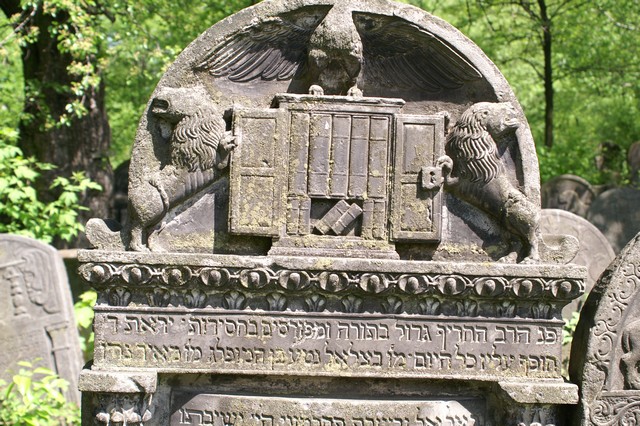
Image 4 Top register of Bezalel's Tombstone, 2007
The world of Bezalel was remembered in a vertical acrostic poem of fourteen lines, just as I had hoped! (Image 4) And so his virtue as a scholar was remembered:
[B] In the shadow of God and in the dwelling of the Lord’s counselor, this is his dwelling place;/
[Z] the righteous acts of God he has performed pleasantly. The Torah is his conversation./
[L] He speedily delivers to his beloved ones the deeds of his wisdom;/
[E] the light of Torah is the pureness of his piety and the fullness of his holiness;/
[L] in order to uncover and interpret for them [its] foundation with secret words./
[N] He planted upon every man strength – the chosen ones of his love;
[T] Goodness, reasoning and knowledge, he taught them in the discussion of his Torah./
[‘] The tree of life, the prince of God, this one is in our midst./
[B] Through his spirit, with a sharp edge, to engrave with the rod of discipline;/
[N] jealousy is humbled by his ‘trees’, indeed (vain-)honor, anger and commotion.
[M] Who will proclaim and glorify his pleasant achievements!/
[E] He loves the gates of Zion more than what is desirous to the eye./
[I] The equity of his truth is in his mouth; in his lips no wrongdoing is found./
[R] The hungry as well as the thirsty – the pleasantness of his conversation has satiated.
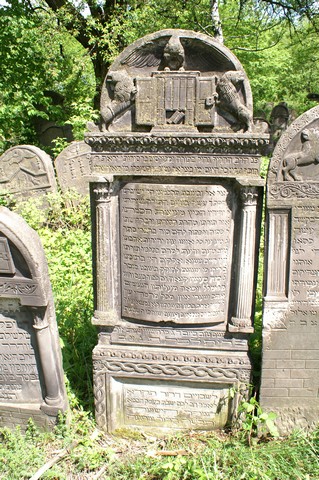
Image 4 Tombstone of Bezalel, 2007
Bezalel Nota’ son of Meir was not an artist like Chaim’s Noah Stremlin or the biblical Bezalel, though the execution of his tombstone is certainly worthy of aesthetic accolades. Bezalel Nota’s epitaph reveals that his artistry was intellectual for as an extraordinary scholar and a teacher he coaxed wisdom forth from the Torah and imbued “his beloveds” with this knowledge. Through his instruction Bezalel smoothed the ragged edges of the human spirit and satisfied the hunger and thirst for knowledge of many. On the base of Bezalel’s tombstone, closing words drawn from Isaiah 61, offer hope to those of Szydlowiec: “To the captives, you will proclaim freedom/ saying for many of you is rest in the valley of weeping;/ deliverance will be speedy;/ and you will bring good tidings of freedom and rebellion.” This final teaching, long before the German army brought devastation to Szydlowiec’s Jewish community in 1942, eerily serves as a portent of what was to come. After ‘finding’ Bezalel that afternoon, we walked about the cemetery and I couldn’t help but envision what an extraordinary center of Jewish learning Szydlowiec once must have been. And Bezalel, true to the meaning of his name “in the shadow of God”, by actions and teachings was imbued with the passion for Torah that Chaim had so often written about in his works.
***
Four Augusts have slipped almost imperceptibly into four Septembers and my love affair with Chaim is ever-growing. As I sit at my desk this late July morning, my first cup of Green tea now stands beside my computer. Another August will soon be here. The works of Chaim Potok – The Chosen, The Promise, My Name is Asher Lev, The Gift of Asher Lev, and Davita’s Harp are still nearby, atop the barrister bookcase beside my desk. Old Men at Midnight still sits foremost amongst them, for within its covers “The Ark Builder” was the wild card through which the literary world of Chaim brought me to contemplate the greater world behind Noah ‘Bezalel’ Stremlin, Reb Binyomin and the Ark within the Kralov wooden synagogue. Chaim’s Bezalel inspired me to reconsider the excerpt of Bezalel of Szdylowiec’s epitaph that too casually I might have passed over. I have learned through Chaim and am fortunate to have visited Szydlowiec and ‘met’ Bezalel. For me, when ‘literary’ preservation joins with physical preservation the lost world comes alive.
Yet this spring, on return to Poland, I realized that I have never seen a wooden synagogue, except in photographs. I have beheld the exquisite stuccoed-brick synagogues in Poland and the Czech Republic, and most recently was fortunate to have finally walked within the Great Synagogue in Orla, Poland. Orla’s frescoes reminded me of the artistry Chaim described within the interior of the Kralov wooden synagogue (Image 5).
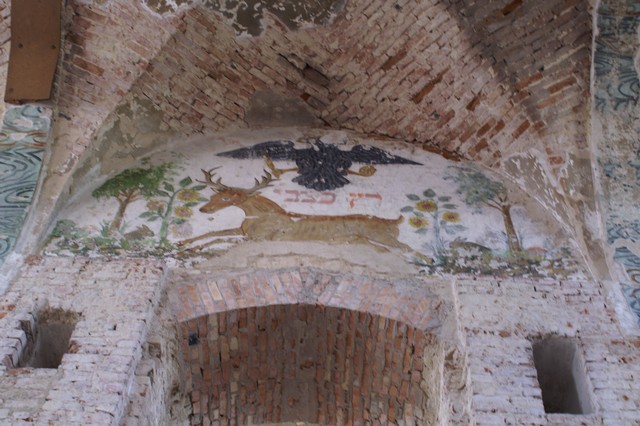
Image 5 Interior Orla Synagogue, Poland, 2010
Poland’s wooden synagogues are now gone, but circumstances brought us for a brief time to Lithuania. Heeding the advice of Ruth Ellen Gruber’s Jewish Heritage Travel: A Guide to Eastern Europe, we visited the wooden synagogue of Ziezmariai. The little town of Ziezmariai is easily reached off the main highway, midway between Kaunus and Vilnius. After several frustrating passes through the town, with no discernable large wooden building in sight, I remembered a book I had just purchased in Vilnius the previous day – Marija Rupeikiene’s A Disappearing Heritage: The Synagogue Architecture of Lithuania. Within its pages was a picture and description of Ziezmariai’s wooden synagogue. On another slow drive along Ziezmariai’s main street, I espied just the top of a wooden structure tucked behind the houses along the main thoroughfare. Set between houses with laundry drying in the breeze was an elongated two story wooden structure. This building could have easily be mistaken for a long-used barn, save the decorative portal – just as Gruber had noted, the tall narrow (now boarded up) windows, the side curved window frames, and a plaque designating this synagogue as part of the European Route of Jewish Heritage (Image 1). I felt the rough, worn texture of the wooden planks of this synagogue’s simple barnlike exterior. Under the midday sun, a creosote-like scent exuded from this structure. Peering within through a missing plank, a blast of cool, dank air brushed my face as I gazed into what appeared to be the foyer. Looking beyond its doorway, I beheld a large, empty, dimly lit two story prayer hall (Image 6). Wooden columns supported what seemed to still be strong wooden rafters. Along one upper wall, a series of small windows indicated what was once the women’s gallery (Image 7).

Image 6 Interior of Ziezmariai Synagogue, Lithuania, 2010
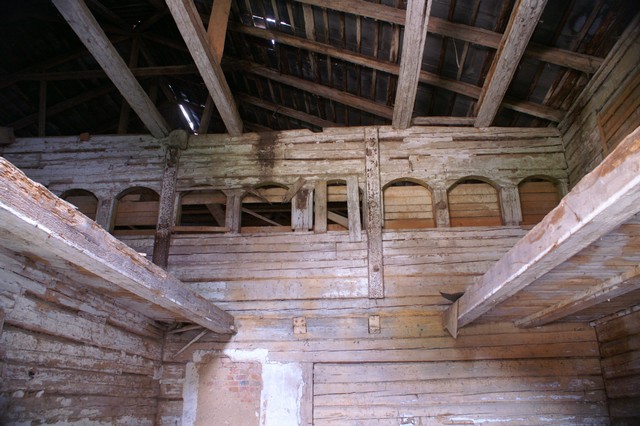
Image 7 Women's Gallery of Ziezmariai Synagogue, Lithuania, 2010
This August, if I return to Chaim and “The Ark Builder”, there will be an imprint in my mind of Ziezmariai’s wooden synagogue, which my own eyes have beheld. And thanks to Chaim, the synagogue is not empty. I can envision the intricacies of its wooden bimah and ark, the parade of animals, and geometric and floral designs that would have adorned this synagogue. Ziezmariai’s synagogue, like Chaim’s Kralov synagogue, will be reborn “in a new dimension of color, space, and time.” And for now I am content … until next August.
__________
Heidi M. Szpek, Ph.D. is a Professor of Religious Studies and Philosophy at Central Washington University (Ellensburg, Washington), currently writing a book on the Jewish epitaphs from Bialystok, Poland, with an intense interest in the preservation of Jewish material culture. Her most recent journal articles include: “Can Ants Say Kaddish?” The Jewish Magazine (July 2010); “The Miqveh beside the Nurzec River: A Place of Remembrance” The Jewish Magazine (June 2010); “With Whispers, He Spread Torah” The Jewish Magazine (April-May 2010); “Esther of Bialystok” The Jewish Magazine (February 2010); “In the Bloodshed of Their Days” The Jewish Magazine (January 2010); “Wooden Matzevoth” (with Tomasz Wisniewski) The Jewish Magazine (October 2008); “He Walked Upon a Wooden Leg: Epitaphs and Acrostic Poems on Jewish Tombstones” Legacy of the Holocaust Conference 2007 Conference Proceedings. Jagiellionian University Press. Krakow, Poland (May 24-26, 2007), 2008; “‘And in Their Death They Were Not Separated’: Aesthetics of Jewish Tombstones.” The International Journal of the Humanities. Vol. 5 (2007): 165-178; and “Oh Earth, Do Not Cover My Blood!”: Eastern European Jewish Identity and the Material Culture.” The International Journal of the Humanities. Volume 4.4 (2006): 7-18.
Photograph copyrights: Heidi M. Szpek (photographed by Frank J. Idzikowski) and Tomasz Wisniewski (Image 2)
*Sources: “Chaim Potok,” Jewish Virtual Library; “Bezalel,’ by Morris Jastrow, Jr., Charles Foster Kent and Louis Ginzberg. Jewish Encyclopedia Online; "Szydlowiec", Encyclopedia of Jewish Communities in Poland, Volume VII (Poland). Yad Vashem; and Chaim Potok’s The Chosen, My Name is Asher Lev, Davita’s Harp and “The Ark Builder” within Old Men at Midnight.
~~~~~~~
from the August 2010 Edition of the Jewish Magazine
|
|
Please let us know if you see something unsavory on the Google Ads and we will have them removed. Email us with the offensive URL (www.something.com)
|





|